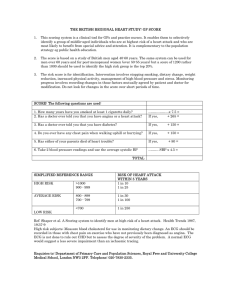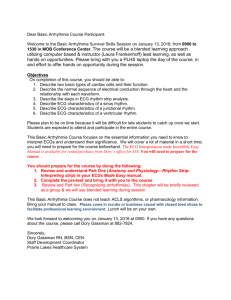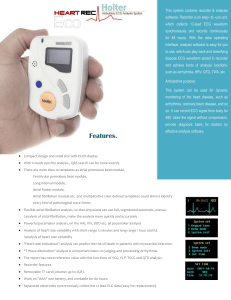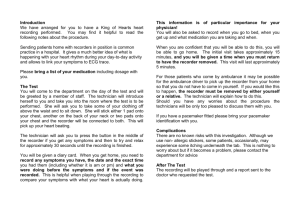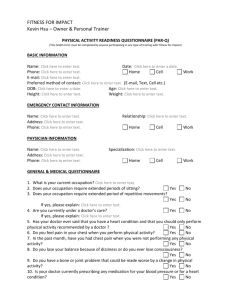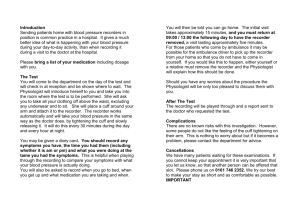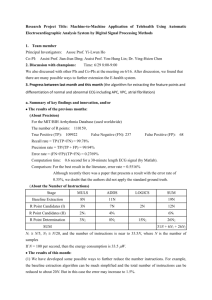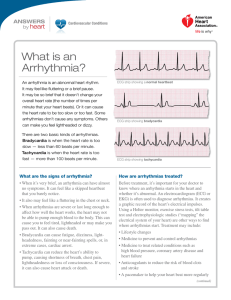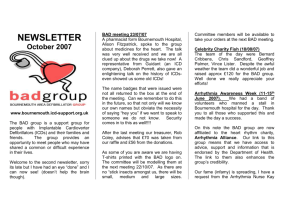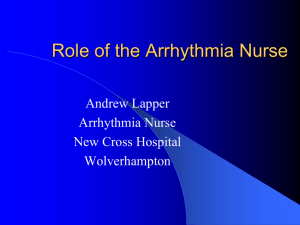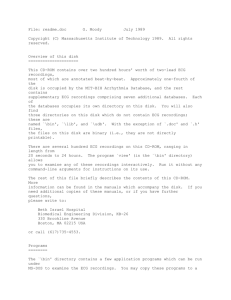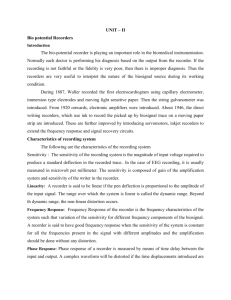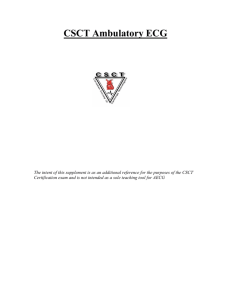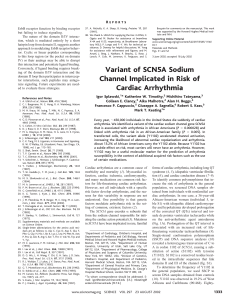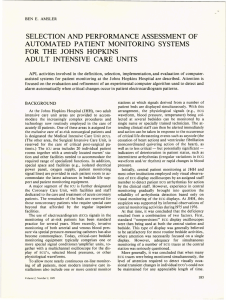word - Englewood Hospital and Medical Center
advertisement
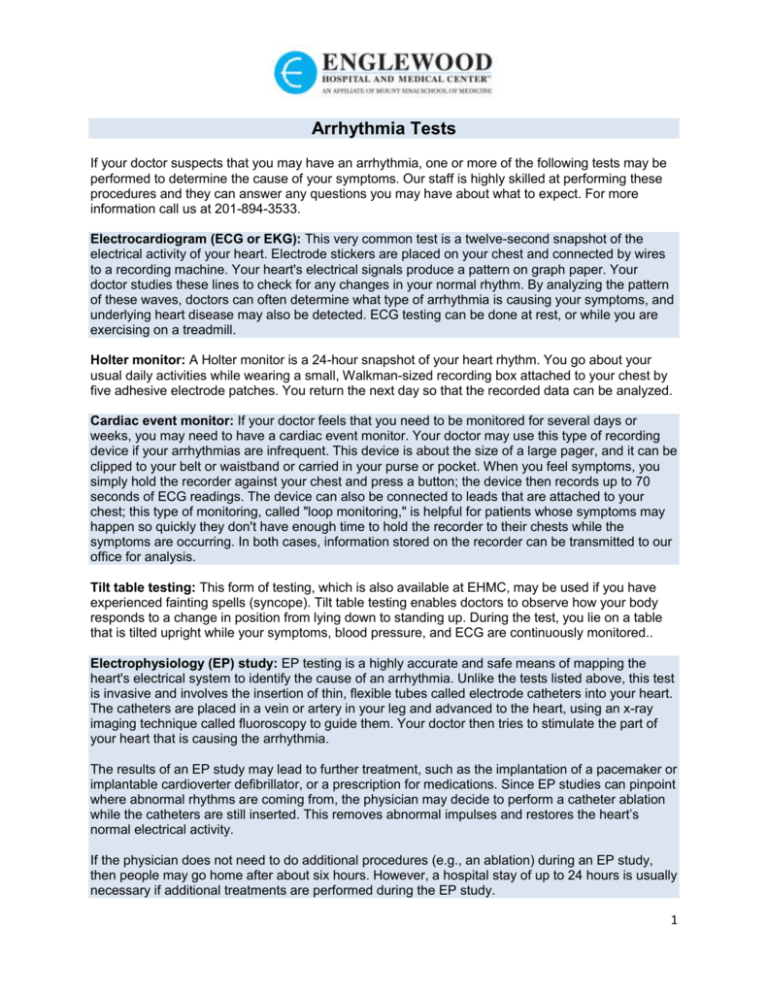
Arrhythmia Tests If your doctor suspects that you may have an arrhythmia, one or more of the following tests may be performed to determine the cause of your symptoms. Our staff is highly skilled at performing these procedures and they can answer any questions you may have about what to expect. For more information call us at 201-894-3533. Electrocardiogram (ECG or EKG): This very common test is a twelve-second snapshot of the electrical activity of your heart. Electrode stickers are placed on your chest and connected by wires to a recording machine. Your heart's electrical signals produce a pattern on graph paper. Your doctor studies these lines to check for any changes in your normal rhythm. By analyzing the pattern of these waves, doctors can often determine what type of arrhythmia is causing your symptoms, and underlying heart disease may also be detected. ECG testing can be done at rest, or while you are exercising on a treadmill. Holter monitor: A Holter monitor is a 24-hour snapshot of your heart rhythm. You go about your usual daily activities while wearing a small, Walkman-sized recording box attached to your chest by five adhesive electrode patches. You return the next day so that the recorded data can be analyzed. Cardiac event monitor: If your doctor feels that you need to be monitored for several days or weeks, you may need to have a cardiac event monitor. Your doctor may use this type of recording device if your arrhythmias are infrequent. This device is about the size of a large pager, and it can be clipped to your belt or waistband or carried in your purse or pocket. When you feel symptoms, you simply hold the recorder against your chest and press a button; the device then records up to 70 seconds of ECG readings. The device can also be connected to leads that are attached to your chest; this type of monitoring, called "loop monitoring," is helpful for patients whose symptoms may happen so quickly they don't have enough time to hold the recorder to their chests while the symptoms are occurring. In both cases, information stored on the recorder can be transmitted to our office for analysis. Tilt table testing: This form of testing, which is also available at EHMC, may be used if you have experienced fainting spells (syncope). Tilt table testing enables doctors to observe how your body responds to a change in position from lying down to standing up. During the test, you lie on a table that is tilted upright while your symptoms, blood pressure, and ECG are continuously monitored.. Electrophysiology (EP) study: EP testing is a highly accurate and safe means of mapping the heart's electrical system to identify the cause of an arrhythmia. Unlike the tests listed above, this test is invasive and involves the insertion of thin, flexible tubes called electrode catheters into your heart. The catheters are placed in a vein or artery in your leg and advanced to the heart, using an x-ray imaging technique called fluoroscopy to guide them. Your doctor then tries to stimulate the part of your heart that is causing the arrhythmia. The results of an EP study may lead to further treatment, such as the implantation of a pacemaker or implantable cardioverter defibrillator, or a prescription for medications. Since EP studies can pinpoint where abnormal rhythms are coming from, the physician may decide to perform a catheter ablation while the catheters are still inserted. This removes abnormal impulses and restores the heart’s normal electrical activity. If the physician does not need to do additional procedures (e.g., an ablation) during an EP study, then people may go home after about six hours. However, a hospital stay of up to 24 hours is usually necessary if additional treatments are performed during the EP study. 1
